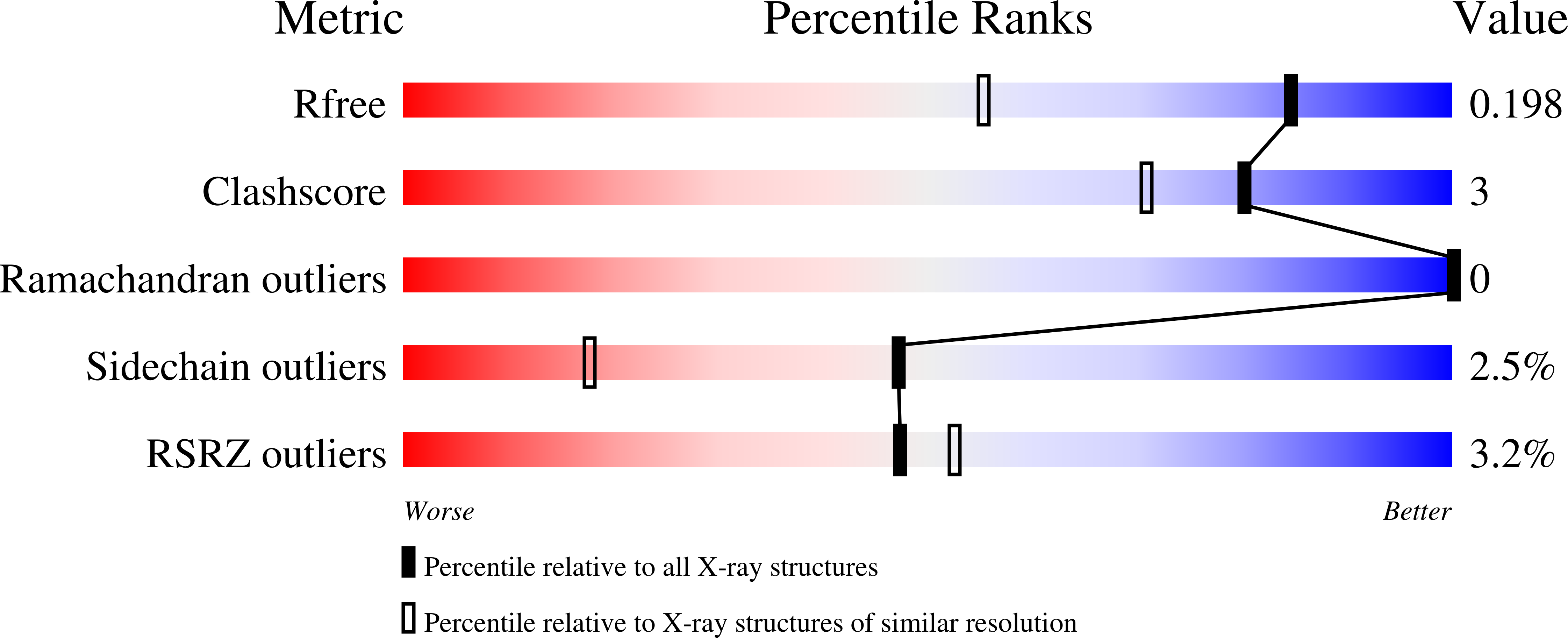Crystal Structure of Fungal Lectin: Six-Bladed {Beta}-Propeller Fold and Novel Fucose Recognition Mode for Aleuria Aurantia Lectin
Wimmerova, M., Mitchell, E., Sanchez, J.F., Gautier, C., Imberty, A.(2003) J Biol Chem 278: 27059
- PubMed: 12732625
- DOI: https://doi.org/10.1074/jbc.M302642200
- Primary Citation of Related Structures:
1OFZ - PubMed Abstract:
Aleuria aurantia lectin is a fungal protein composed of two identical 312-amino acid subunits that specifically recognizes fucosylated glycans. The crystal structure of the lectin complexed with fucose reveals that each monomer consists of a six-bladed beta-propeller fold and of a small antiparallel two-stranded beta-sheet that plays a role in dimerization. Five fucose residues were located in binding pockets between the adjacent propeller blades. Due to repeats in the amino acid sequence, there are strong similarities between the sites. Oxygen atoms O-3, O-4, and O-5 of fucose are involved in hydrogen bonds with side chains of amino acids conserved in all repeats, whereas O-1 and O-2 interact with a large number of water molecules. The nonpolar face of each fucose residue is stacked against the aromatic ring of a Trp or Tyr amino acid, and the methyl group is located in a highly hydrophobic pocket. Depending on the precise binding site geometry, the alpha- or beta-anomer of the fucose ligand is observed bound in the crystal. Surface plasmon resonance experiments conducted on a series of oligosaccharides confirm the broad specificity of the lectin, with a slight preference for alphaFuc1-2Gal disaccharide. This multivalent carbohydrate recognition fold is a new prototype of lectins that is proposed to be involved in the host recognition strategy of several pathogenic organisms including not only the fungi Aspergillus but also the phytopathogenic bacterium Ralstonia solanacearum.
Organizational Affiliation:
National Centre for Biomolecular Research and Department of Biochemistry, Masaryk University, 611 37 Brno, Czech Republic.
















